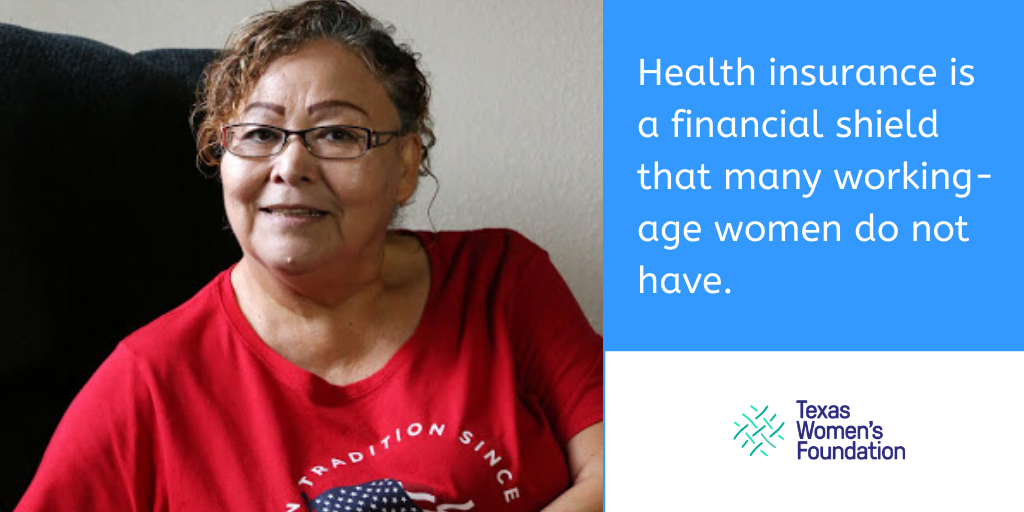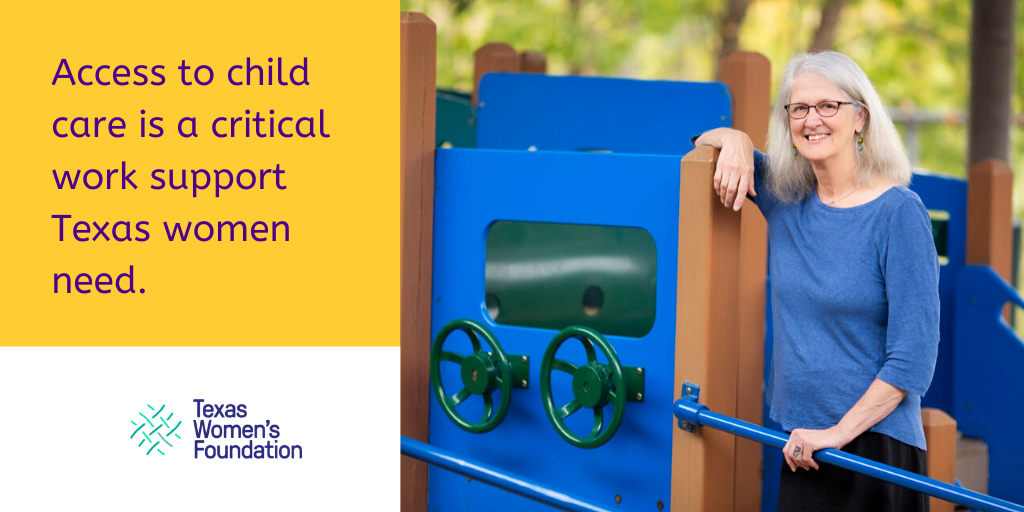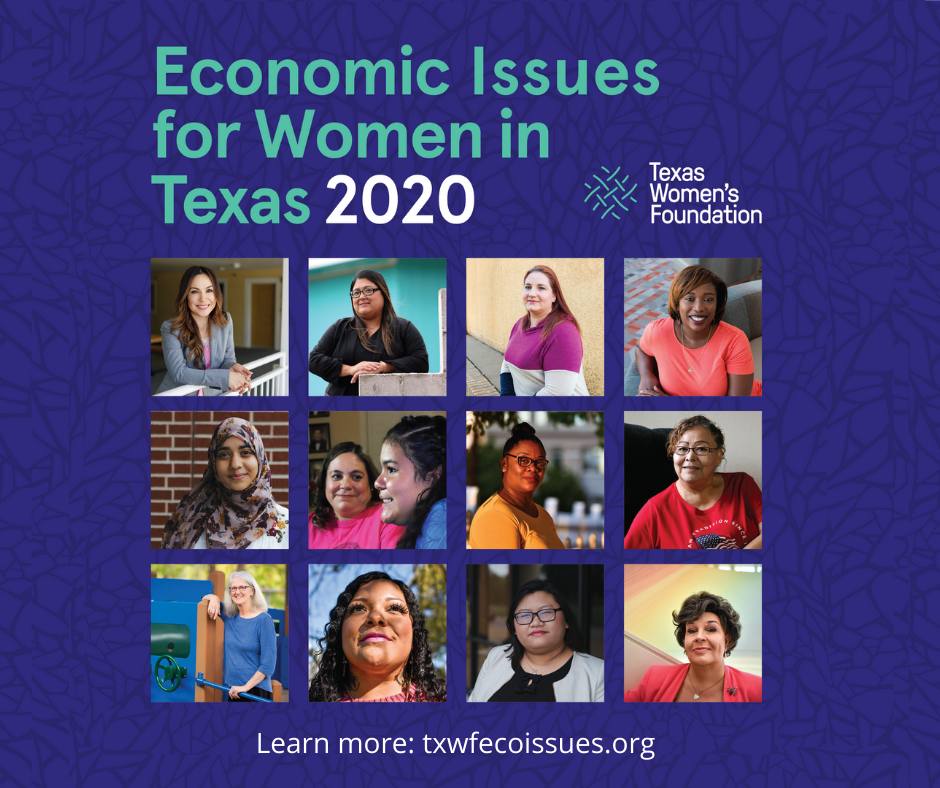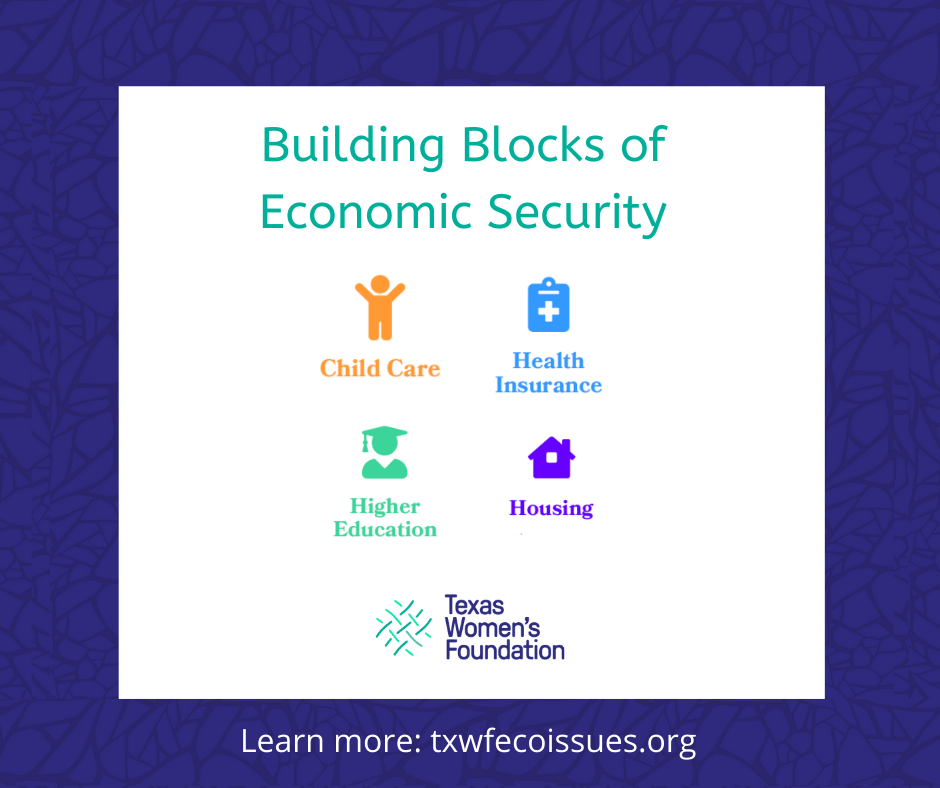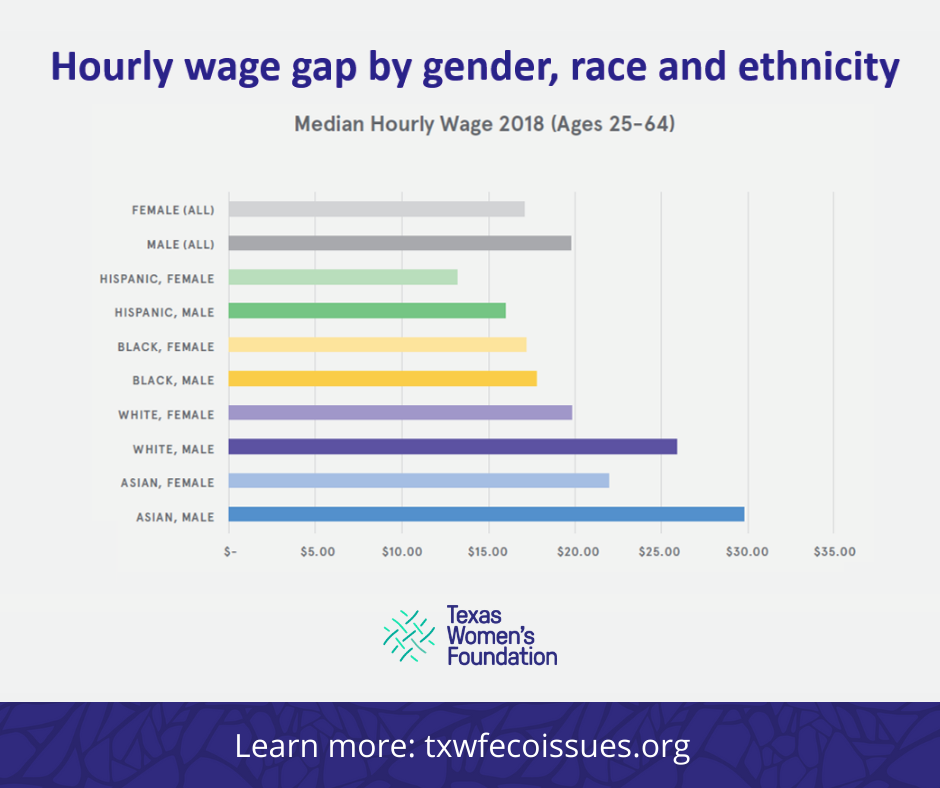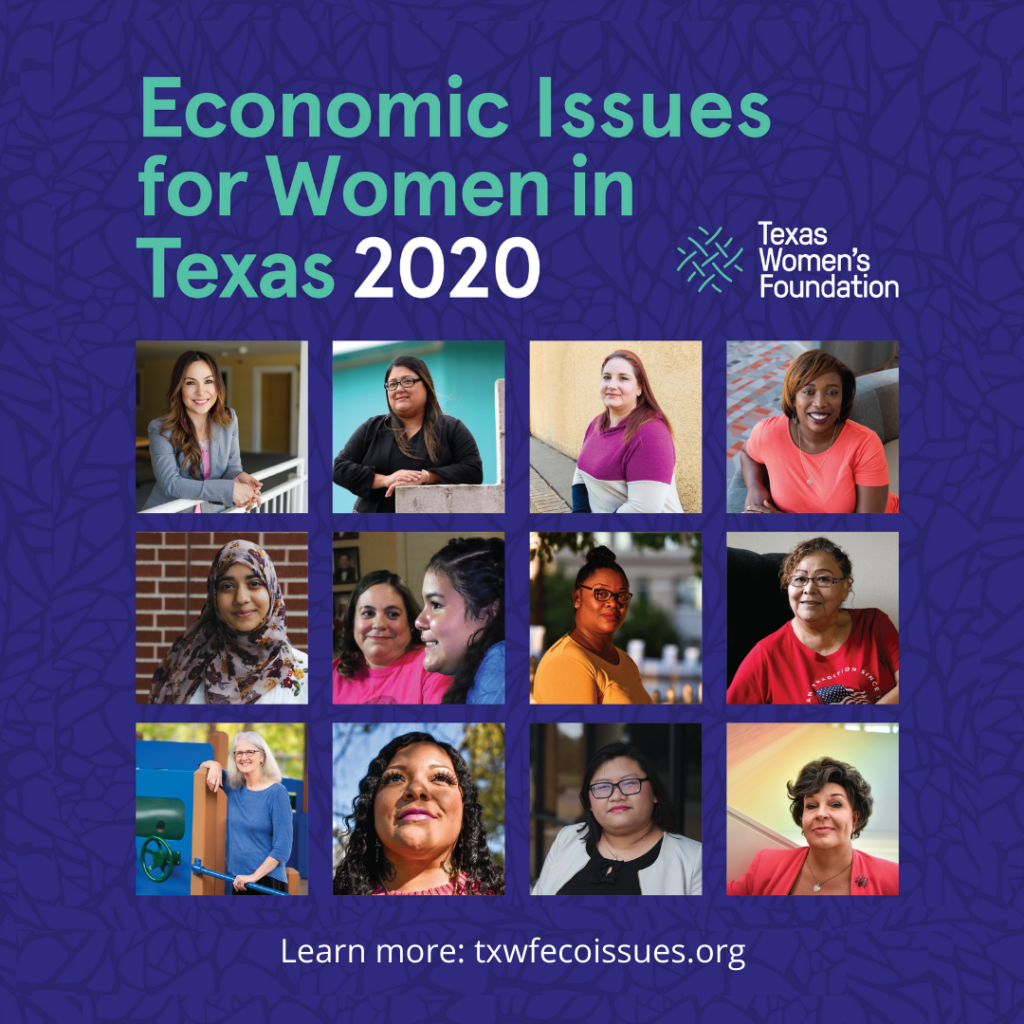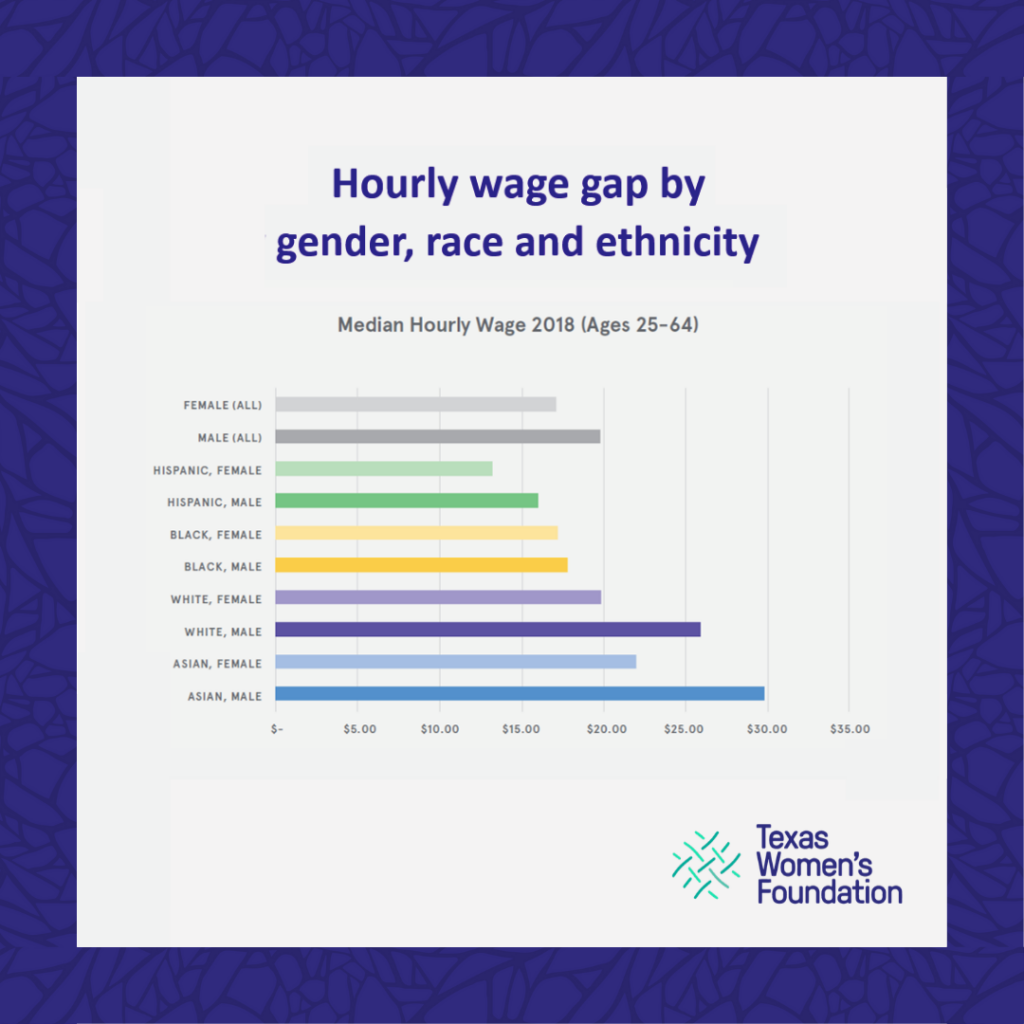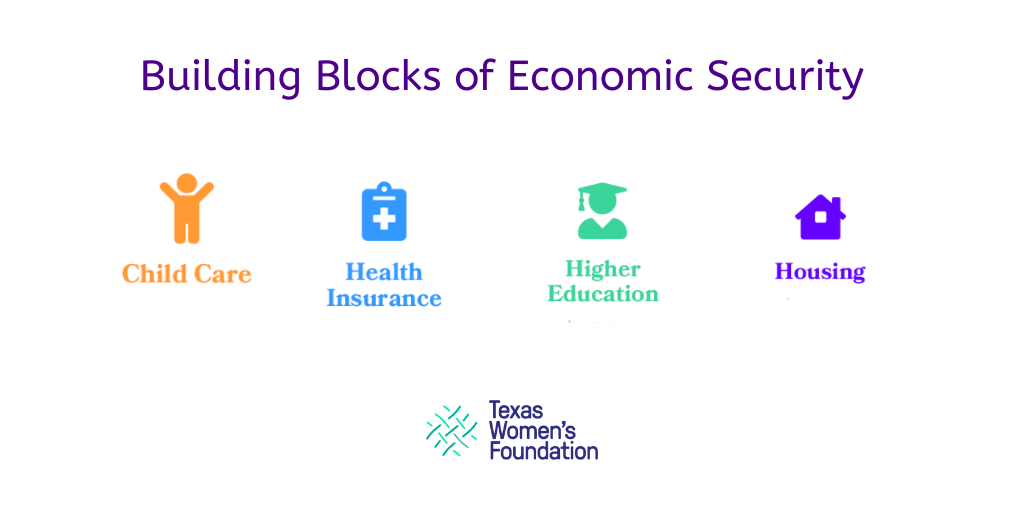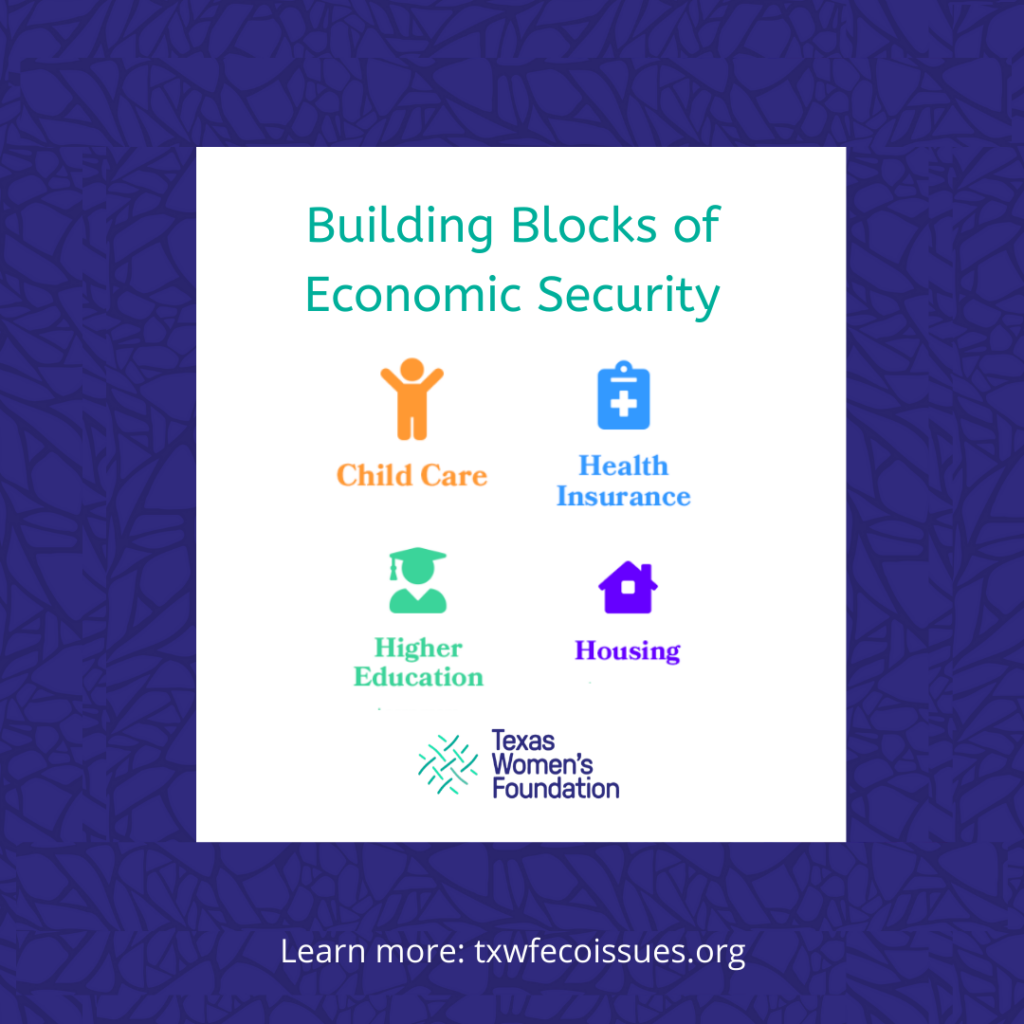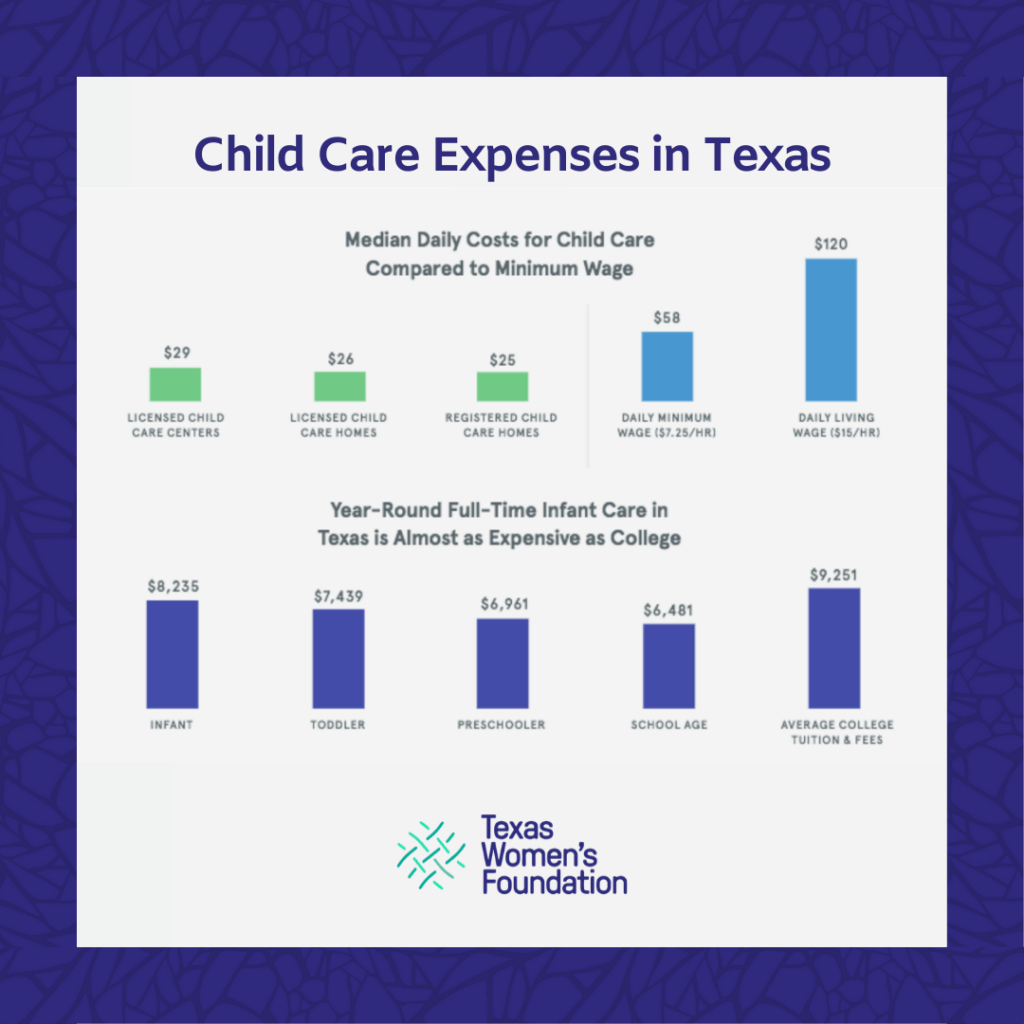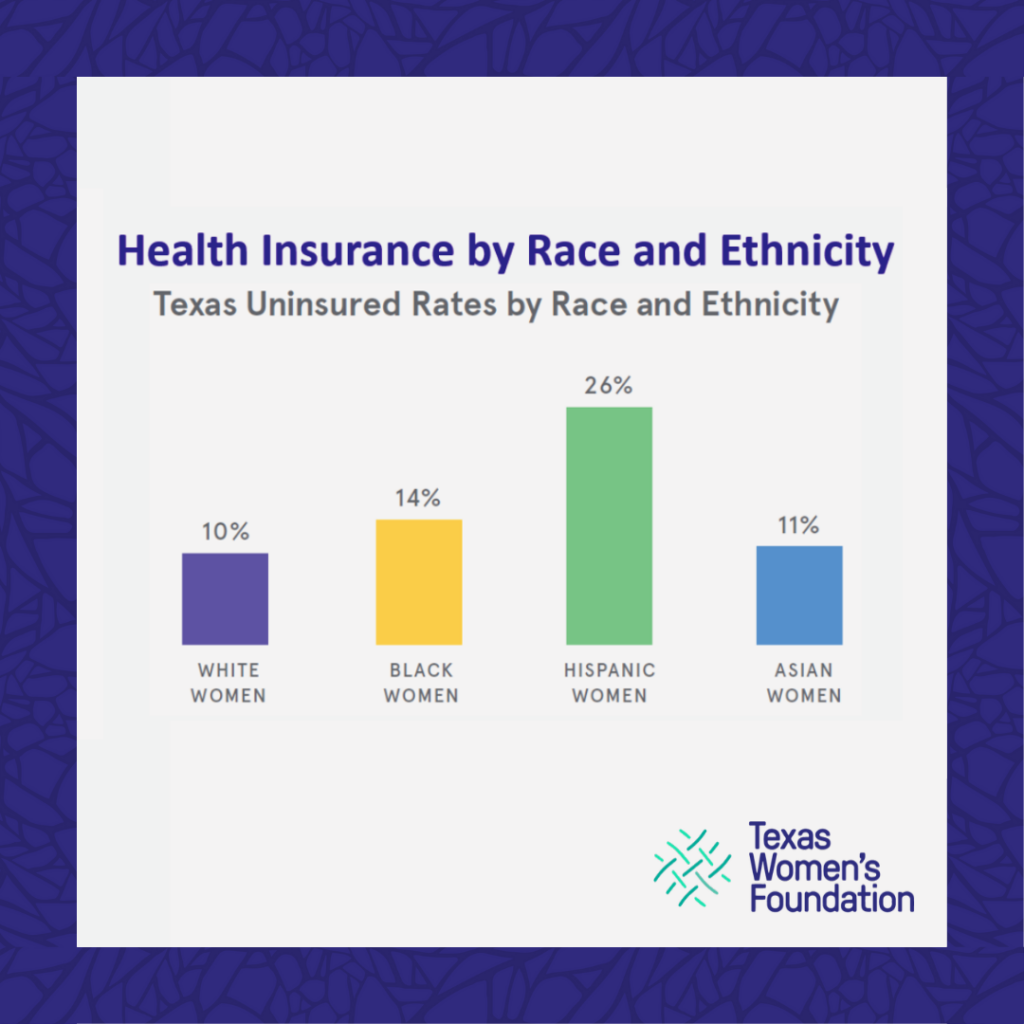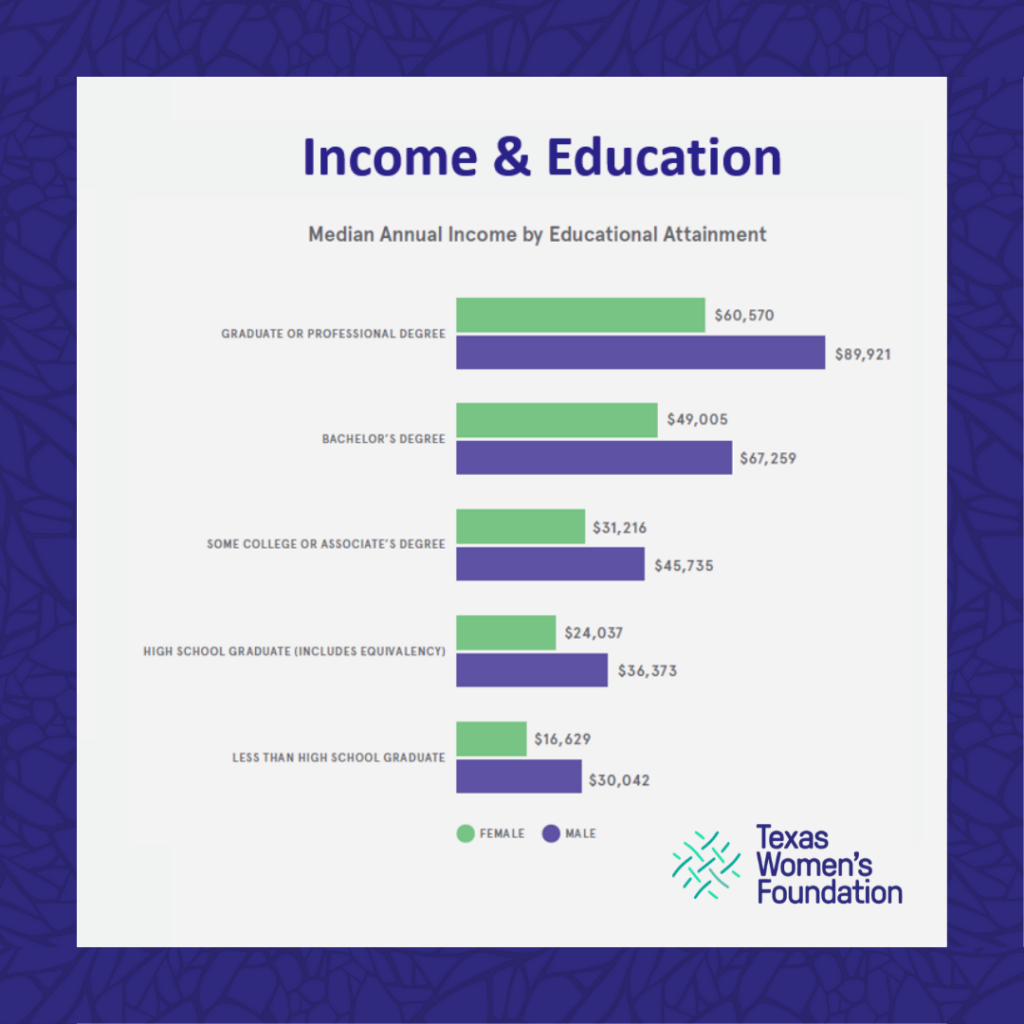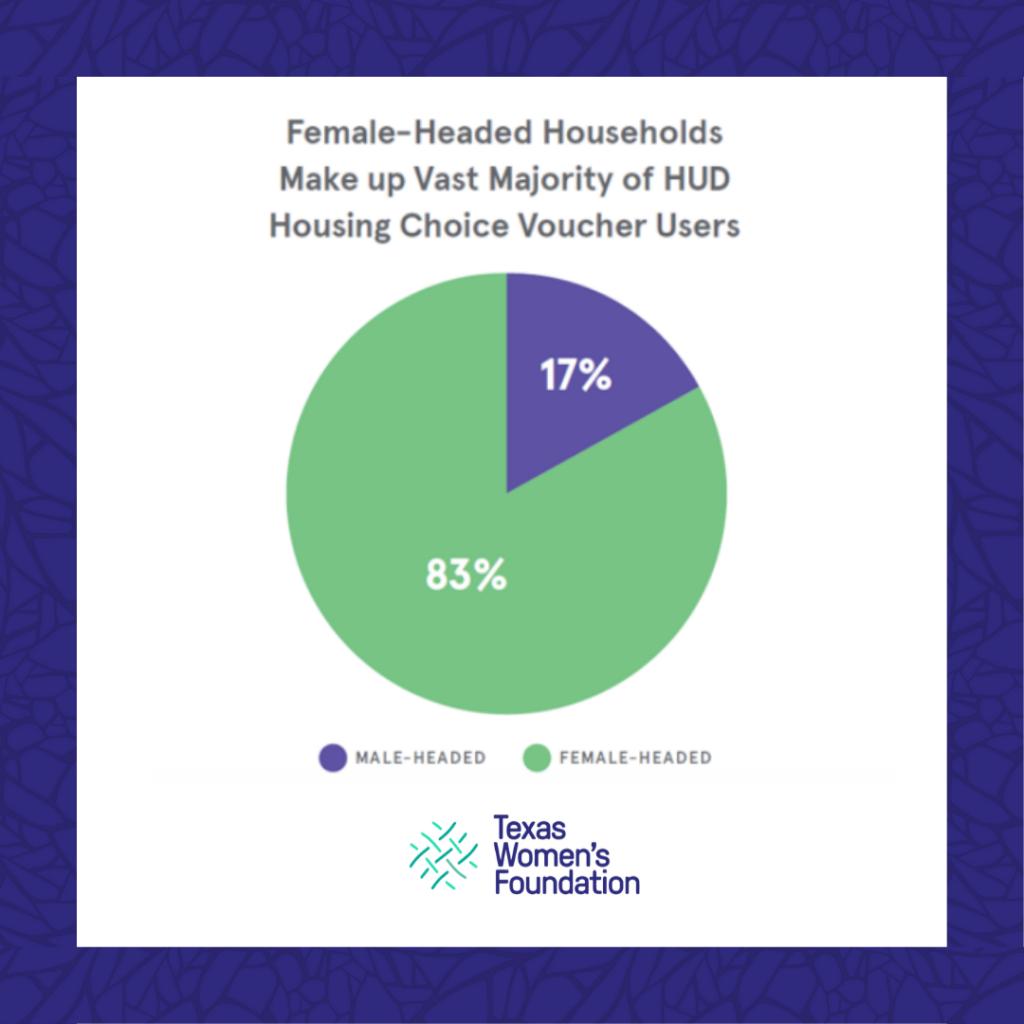Digital Toolkit
Texas Women’s Foundation is pleased to present the fourth edition of Economic Issues for Women in Texas that takes a comprehensive look at the four pillars that are fundamental to the financial security of a woman and her family: education, child care, health care, and housing. This study reveals the challenges Texas women have faced amidst a pandemic and provides policy recommendations for creating a more equitable society.
We encourage our Army of Advocates across Texas to use and share the study’s findings with your networks to help build awareness and shape policies and practices that impact women and girls. Please use this digital toolkit for content and graphics to share with your networks and on your digital platforms so that together we can move women and families across Texas from surviving to thriving.

Find Texas Women’s Foundation on social media:
Facebook: https://www.facebook.com/texaswomensfdn/
Twitter: https://twitter.com/texaswomensfdn
Instagram: https://www.instagram.com/texaswomensfdn
LinkedIn: https://www.linkedin.com/company/texas-womens-foundation
#HerStoryTX #TexasWomen #StrongWomen #txlege

Working Women: Key Data Points
- Over 1.1 million women (ages 25-64) joined the working-aged group in Texas in 2019 – an 18% increase from 2009-2019.
- Nearly 15% of Texas women and girls experienced poverty in 2019. That’s over 2.1 million women and girls.
- Before the pandemic, 60% of Texas mothers were breadwinners, with women of color and low-income mothers more likely to be the sole breadwinners. However, the pandemic has led to an increase in women leaving the workforce to care for their children.
- Over one in five Texas women are essential workers. The majority of frontline workers in Texas are women and people of color.
- Over 60 percent of Texas women were in households that experienced difficulty paying for their usual household expenses during the pandemic. In 2021, one out of four women in Texas households did not have their regular source of income from before the pandemic
- Over one in four child and day care workers in Texas lost their job at the beginning of the pandemic.

Child Care: Key Data Points
- 2.2 million women in the workforce are mothers. Child care is critical for job sustainability.
- For a Texas woman making the median income of $41,687, year-round full-time infant care takes up 21 percent of their earnings.
- A third of Texas women were in households where children under the age of five were unable to attend day care or another child care arrangement.

Health Insurance, Higher Education, Housing: Key Data Points
- Over 1 in 5 working-age women in Texas are uninsured – two times the national rate. In total, over 2.5 million women in Texas were uninsured before the pandemic.
- Overall, Texas women are well educated, with 1.5 times as many women as men completing public college in 2021. More women than men are earning degrees from all types of higher education institutions in Texas: two-year schools as well as four-year public and private universities.
- Women in Texas have a debt-to-income ratio that is 13 percentage points higher than men.
- Housing is the largest expense for most women in Texas. More than 792,000 Texas renters are severely housing-cost burdened, meaning they spend more than half of their income on housing.
- Over one in four Texas women are in households where someone teleworks, most due to the pandemic.
Economic Issues for Women in Texas 2022 Infographic & Press Release

Economic Issues for Women in Texas 2022 Press Release – English
Economic Issues for Women in Texas 2022 Press Release – Spanish
The economic pillars of education, child care, health insurance and housing are the foundation for policies that will strengthen communities and lead to a brighter future for #TexasWomen.
Learn more via @texaswomensfdn’s new report on #TexasWomen2022: txwfecoissues.org
| The women of Texas are strong, resilient and hard-working. Despite an ongoing pandemic and hurdles created by the #txlege, Texas women continue to make Texas a better state. Learn more via @texaswomensfdn’s new report on #TexasWomen2022: txwfecoissues.org |
The pandemic has impacted the financial security of women across the state. In 2021, one in four women in Texas households did not have their regular source of income from before the pandemic. Learn more via @texaswomensfdn’s new report on #TexasWomen2022: txwfecoissues.org
Educational attainment is a primary driver of social and economic prosperity, but women with college degrees still experience poverty at higher rates compared to men with college degrees.
Learn more via @texaswomensfdn’s new report on #TexasWomen2022: txwfecoissues.org
Accessible child care is crucial for working mothers. However, the pandemic led to a decrease in child care availability in 2020, and child care services are still not yet back to normal.
Learn more via @texaswomensfdn’s new report on #TexasWomen2022: txwfecoissues.org
The #txlege has yet to expand Medicaid. As a result, Texas has 406,000 uninsured women below the poverty line who lack affordable coverage options, many of whom are women of color.
Learn more via @texaswomensfdn’s new report on #TexasWomen2022: txwfecoissues.org
Texas is capable of being a state where all women can prosper. The #txlege needs to understand the effects of the intersection of race and gender to implement the most effective policies.
Learn more via @texaswomensfdn’s report on #TexasWomen2022: txwfecoissues.org












